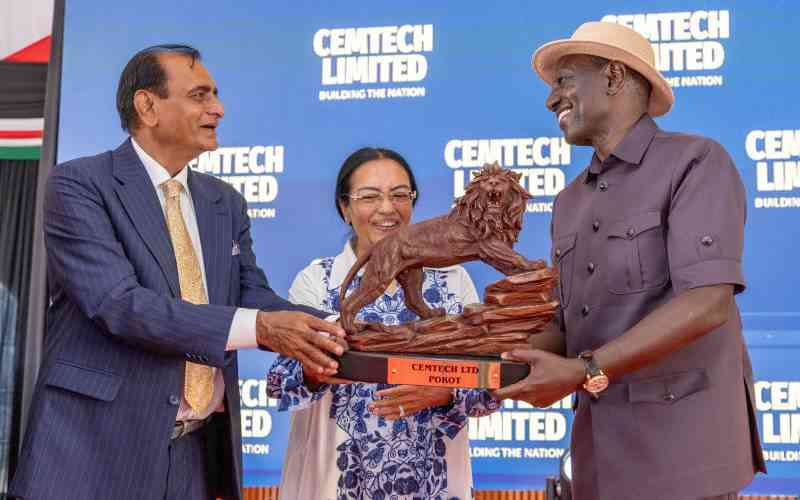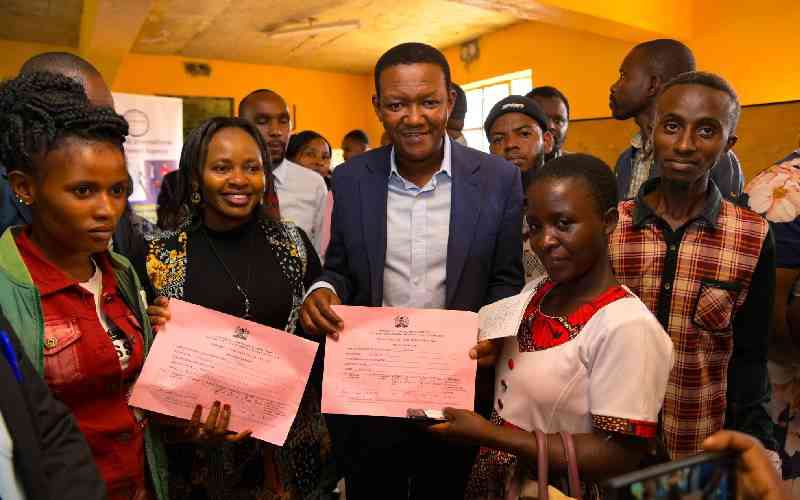The Senate has began debating a proposed formula to guide revenue sharing among counties for the next three years.
The Senate's Finance and Budget Committee has recommended inclusion of two more parametres in the Second Generation Revenue Sharing Formula, devised by the Commission on Revenue Allocation (CRA).
The committee, chaired by Senator Billow Kerrow (Mandera), wants the development factor and personnel emolument, as additional parametres. This would bring to seven the factors for consideration in revenue sharing.
However, some senators have rejected the proposed factors, which contribute to three per cent of the recommended weights. They feel the formula should be subjected to further review.
Debate on the proposed formula kicked off at the Senate last Thursday, with senators accusing the CRA of being micro-managed by the Executive.
The committee has retained other factors such as population, basic share, poverty, land area and fiscal responsibility.
Minority Leader Moses Wetang'ula (Bungoma) faulted CRA for "failure to ensure counties get their right share without influence from the Government". But, he said governors must be prudent in cash management.
"Counties must be held accountable. This formula might not address all the challenges affecting counties but they must get adequate allocation," said Wetangula.
Historical injustices
According to the committee’s proposal, derived from the current weights for the First Generation Revenue Sharing Formula, population is the main consideration for allocation at 45 per cent, basic share at 25 per cent and land area (eight per cent).
However, it has slashed two per cent off the poverty parametre, reducing it to 18 per cent, with personnel emolument benefiting from the variation.
The committee has also halved the two per cent parametre initially considered for fiscal responsibility, ceding the one per cent to the newly proposed development factor.
Senator Kipchumba Murkomen (Elegyo/Marakwet) has opposed the formula saying it would further cure historical injustices, especially in counties that cannot raise their own revenue. "These parametres do not provide a mechanism to address inequalities in sectors like health, agriculture and other social amenities," said Murkomen.
They said the proposed formula, which the committee recommends should be put to use in the next financial year-2015/2016 and run for the next three years, was arrived at after consultations from key stakeholders.
Kerrow, while moving the motion, explained the new formula seeks to ensure equity.
Stay informed. Subscribe to our newsletter
CRA had said the creation of the two parametres would not fundamentally change the original formula.
"The argument was that no substantial change on the basis of economic disparities among counties had been noted over the first formula," stated the committee.
 The Standard Group Plc is a
multi-media organization with investments in media platforms spanning newspaper
print operations, television, radio broadcasting, digital and online services. The
Standard Group is recognized as a leading multi-media house in Kenya with a key
influence in matters of national and international interest.
The Standard Group Plc is a
multi-media organization with investments in media platforms spanning newspaper
print operations, television, radio broadcasting, digital and online services. The
Standard Group is recognized as a leading multi-media house in Kenya with a key
influence in matters of national and international interest.
 The Standard Group Plc is a
multi-media organization with investments in media platforms spanning newspaper
print operations, television, radio broadcasting, digital and online services. The
Standard Group is recognized as a leading multi-media house in Kenya with a key
influence in matters of national and international interest.
The Standard Group Plc is a
multi-media organization with investments in media platforms spanning newspaper
print operations, television, radio broadcasting, digital and online services. The
Standard Group is recognized as a leading multi-media house in Kenya with a key
influence in matters of national and international interest.









